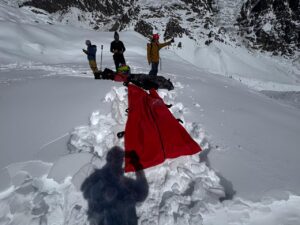In the year 1190, something unusual happened: Annapurna IV fell down.
Well, a huge piece of it did. The cataclysm happened all at once, new research claims. It was so comprehensive that if it would have occurred today, it would have buried Pokhara –- Nepal’s second-most populated metropolitan area with around 600,000 residents.
The paper appeared recently in the journal Nature. In it, lead author Jerome Lave theorizes a scenario in which a “glacial buzz saw” gradually pulls mountains down. At least, mountains that are smaller than substantial, steep Annapurna IV (7,524m). It’s a “Teflon Peak,” the scientists say, meaning material that would normally stick to a formation instead slide off it.
This tends to give its surface better durability. Yet still, scientists knew as early as the 1980s that the substrate at the foot of the peak had arrived there from some kind of significant landslide. The amount of infill suggested it could be more than typical glacial sedimentation.
Size of landslide ‘unheard of’
Lave’s team says those early researchers were right. Twenty-three cubic kilometers of Annapurna IV calved off, they calculated, which is a volume one glacial geologist called “unheard of” for a landslide.
You’d be hard-pressed to hear of another one in your lifetime, or anywhere in recorded history. As Eos reported, the researchers suggested events on this scale might occur on the world’s highest mountains every few hundred thousand years.
Incredibly, the team “reconstructed” the way Annapurna IV’s peak looked back in 1190, Eos said. The team first used helicopters to harvest sediment samples from locations at varying altitudes on the peak. Then in a lab, they triangulated multiple methods of dating and analysis including carbon dating, cosmic ray testing, and “analyzing quartz to see when it was last deformed by an event such as a landslide.”
Whatever caused the purported landslide remains lost in translation. But believe it or not, climate instability could have been a trigger.
King Richard I sat on the throne of England when the Medieval Climate Anomaly exerted temperature fluctuation trends on the planet that generally elude quantitative measurement today.
Did the top of Annapurna IV melt off while King Richard the Lionheart was busy leading a failed crusade in Jerusalem? I think you had to be there, man.






